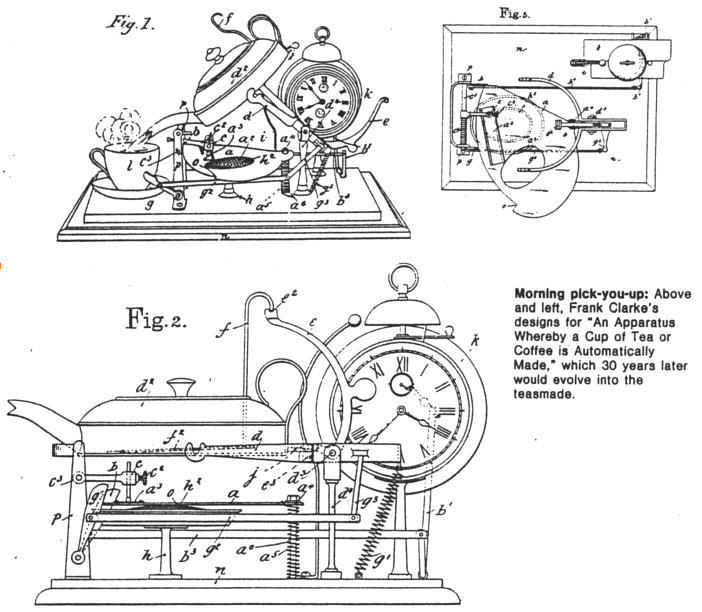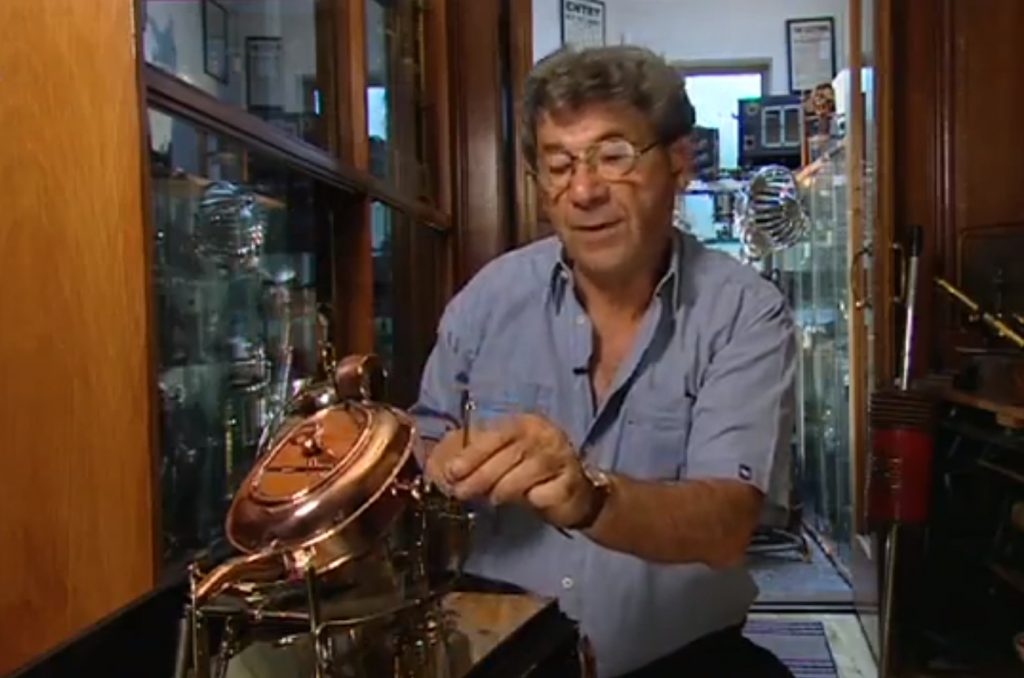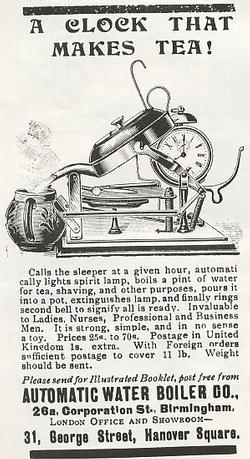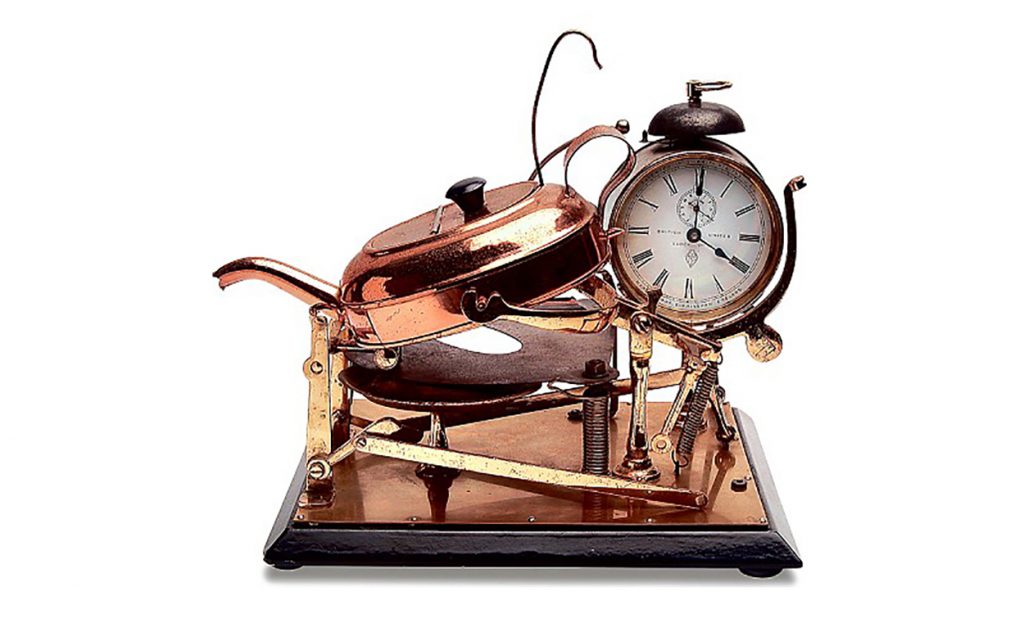1904 Richardson's Clock that Makes the Tea
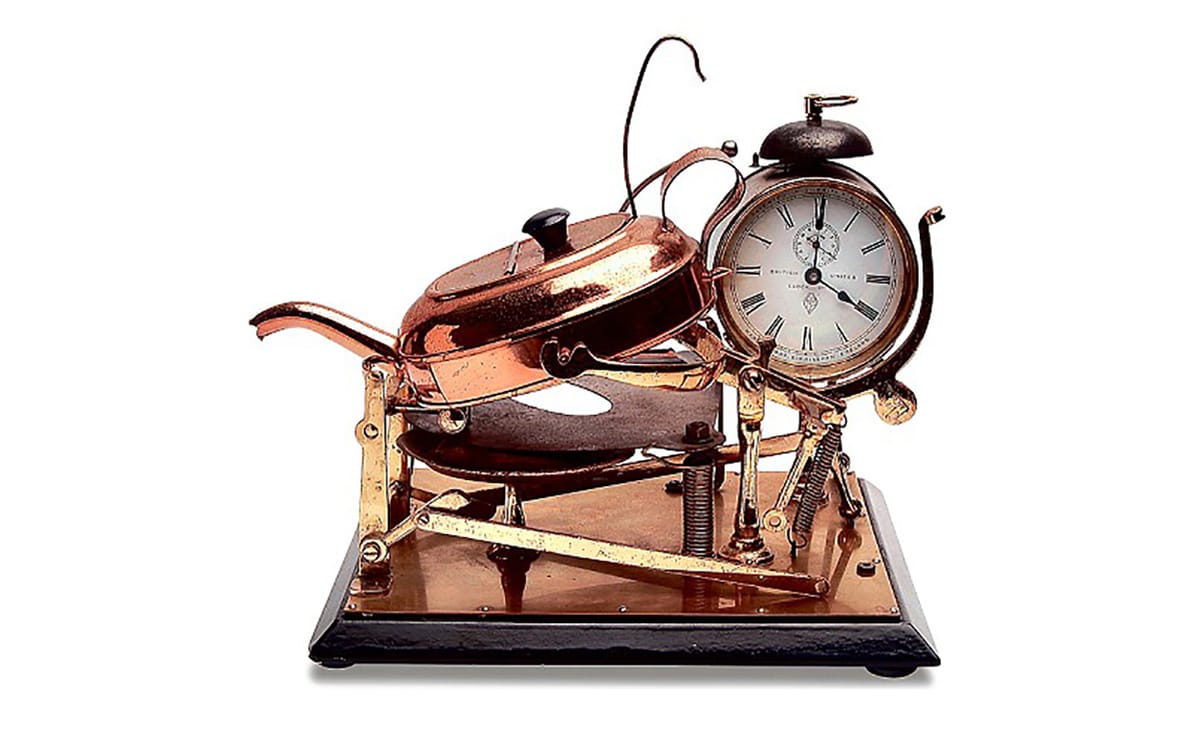
This tea making machine was invented by Albert Edward Richardson. Unlike Rowbottom’s earlier invention, Albert’s teasmade relied upon a tipping kettle. The machine and all rights to it were purchased from Richardson by the Birmingham gunsmith Frank Clarke, for an undisclosed sum. Frank Clarke filed the patent on April 7th 1902 calling it “An Apparatus Whereby a Cup of Tea or Coffee is Automatically Made”.
Clarke manufactured the teamade in about 1904. Clarke’s Automatic Water Boiler Company can claim to have been the first to commercially market an automatic tea maker. You can find out more on the Automatic Water Boiler Company page.
Chris Upton describes the “Clock That Makes Tea” for us as follows:
“Clarke’s machine begins with a clock which has a revolving winder attached to it. Once the clock has reached a pre-set time (on the patent diagram the inventor has set it for the civilised hour of 5 to 8), the winder releases a catch which allows an arm to spring back and strike a match.” (The match is held against some abrasive paper by spring pressure). “A match alone is not enough to boil a kettle full of water, obviously. The match in turn lights a spirit lamp positioned under the kettle.”
“Once the water is boiling the steam lifts a plate inside the kettle. The plate replaces another catch which has been holding the kettle in position. Once released the kettle tips forward and pours the boiling water into a waiting cup. Tea’s up. This in itself is pretty impressive, but there remains the possibility that the person in bed might not have been woken up by all this clicking and striking and springing and bubbling. The inventor, however, had added one final piece to the jigsaw. Once the kettle has tipped up sufficiently it releases another catch which allows a shutter to slide over the spirit lamp to extinguish it. (Otherwise you might wake up to a real fire). As the shutter slides across it moves an arm, which strikes the bell on top of the clock. Hey presto! Alarm clock and teasmade, all in the same breath.”
The Clock that makes the Tea did not meet with universal approval. On Saturday 23 July 1904, the dubious Lancashire Daily Post described it as “almost human” and a “freak”, and queried:
Could anything more uncanny well be imagined? Why not fit on a megaphone, so set as to say “Get out of bed, old sleepy head.”
In the event it was this prophecy, rather than the teasmade itself, which proved to be uncanny.
The example in the Science Museum was presented to them by L Mawer of Kingston Upon Thames in 1961.
